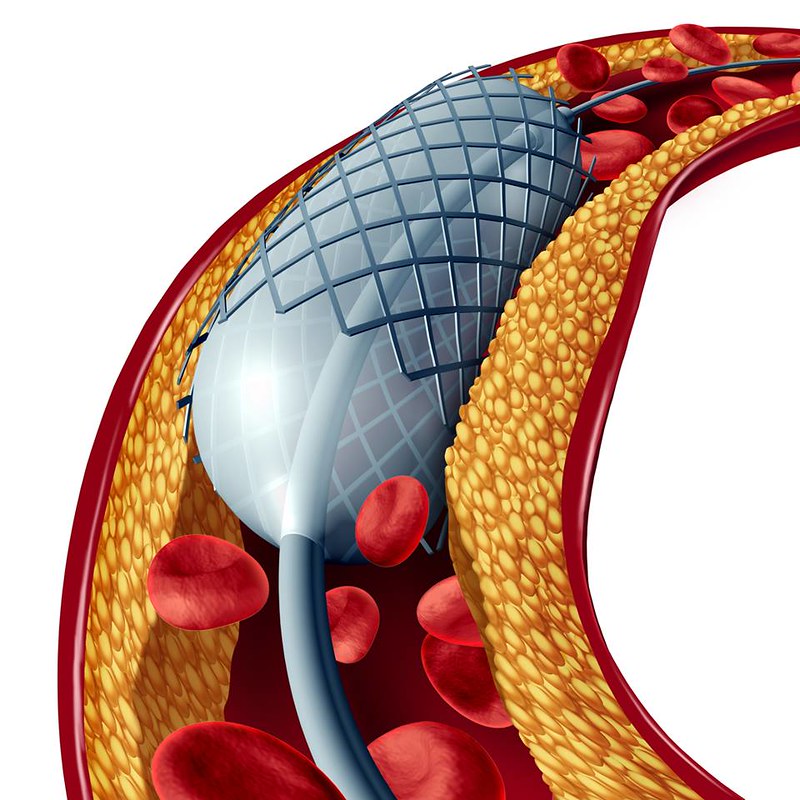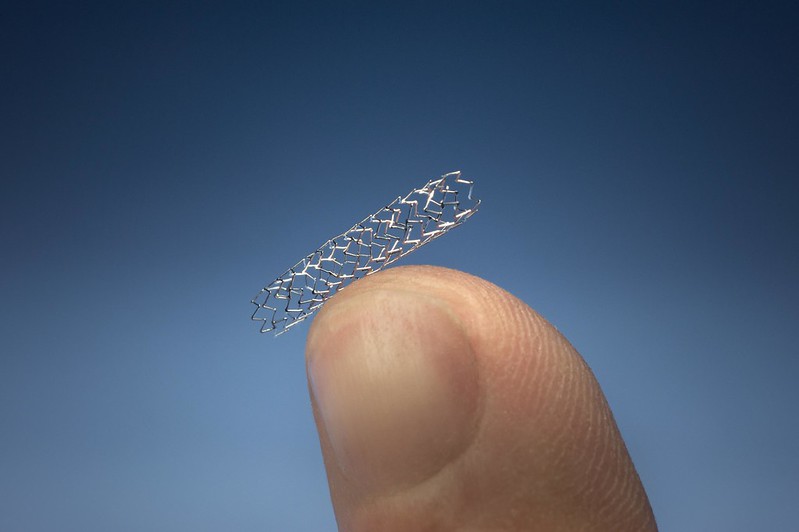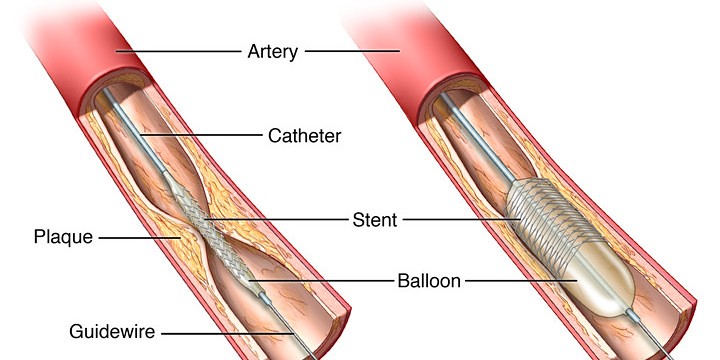SHARES

“It was terrible. I felt like I had already died once. Until today, I still find it a miracle that the heart stent saved my life. But, I’m still worried that I may get a heart attack again.” Samuel, 63, after a heart attack, is doing well on a heart stent, without any symptoms.
What Is A Heart Stent?
It is a piece of wire mesh that is fabricated in a way to take the shape of the blood vessel. After the stent is inserted inside our blood vessel, the stent stays in place to keep the artery open.
Why Do I Need A Heart Stent?
When we have a heart attack, it is because one or more of the critical blood vessels supplying blood to the heart gets clogged up. As a result, the heart muscles start to die because of insufficient blood supply. At a critical time like this, we have to unblock the blood vessel as fast as we can to save our heart muscles from dying further.
This gold standard treatment is called angioplasty /”angio-” means “blood vessel”; “-plasty” means “moulding”/. In this procedure, a small rubber tube is first inserted into our blood vessel to reach the blockage site. Then, the rubber tube is ballooned to open up the vessel.
However, there is a chance that this part of the vessel can close up again in near future. As such, your doctor will review your risk and assess the need for a heart stent placement. Generally, a heart stent can last for years to a lifetime.
Is There Any Danger In Using A Heart Stent?
The procedure itself is very safe and reliable. This option saves you from open surgery (coronary artery bypass surgery) with much higher risks and complications. However, if you are in a dire situation such as multiple blocked heart vessels, massively dying of heart muscles with a failing heart, an open surgery might be the only way to save your life.
Rare complications of heart stents include damage to blood vessels wall, dislodged stent and infection. This procedure is usually done together with angiogram (injecting dye into blood vessel to locate clogged vessels) and angioplasty.
Uncommon complications associated with these procedures include abnormal heart rhythm, heart attack, kidney damage, stroke, and bleeding. To minimize the risks, your doctor will evaluate your kidney health before using dye. He will also prescribe blood thinning medication, enough to prevent stroke but not too much to avoid causing major bleeding.
Will I Get Heart Attack Again After Heart Stent?
The stent is designed with material that lasts for a lifetime. Sometimes, the stent can fail due to re-narrowing of the blood vessel and formation of blood clot inside the stent. To counter this problem, your doctor will give you one or more medication to prevent clot formation (eg. aspirin, clopidogrel).
Depending on your risk for bleeding and heart attack, your doctor will tailor a treatment plan for you. You may need to take anti-platelet medication for a lifetime if heart attack risk is high. Also, some heart stents have drug coating to prevent blood from clotting.
How Do I Prepare Myself? What Should I Expect?
Before the Procedure
Your doctor will evaluate your health carefully and tailor a treatment plan that best fits your need. This can be an angiogram, then an angioplasty and stenting following immediately. Usually, you will have to fast for about 6-8 hours before the procedure. The doctor will also look at all the medications you are taking and may ask you to stop taking some of them before the stenting procedure.
During the Procedure
A specialised team of doctor will care for you throughout the procedure. It usually takes hours. Your doctor will assess your condition beforehand and make sure you get enough blood thinner. For the entire process, you will be staying awake. But, your doctor will give you some sedative to help you relax and local anesthesia so that you will not feel any pain.
At first, a very small cut is made in your groin/arm/wrist area. After that, a thin flexible rubber tube (catheter) is inserted into your heart artery with the help of guide wire. Your doctor will inject dye and use x-ray to find the clogged vessel. The catheter can then be ballooned to open up the vessel.
If your doctor decides to use a heart stent, it is usually placed at the tip of catheter. As the catheter inflate, the heart stent increases in diameter and locks in place. Sometimes, more than one stent are put in place. The catheter will then be removed. Your surgical wound will be cleaned and dressed.
After the Procedure
You would probably stay in the hospital overnight for monitoring complications. Your doctor will optimise your medication (eg. blood thinners) before hospital discharge. Drink plenty of water to flush out the dye and protect your kidney.
Follow your doctor’s advice on activity restriction after discharge. More importantly, seek advice on healthy lifestyle changes and make sure your blood sugar, cholesterol and blood pressure are under control. That would be the best way prevent heart attacks.
Conclusion
Inserting a heart stent to treat heart attack, is a very safe and reliable procedure lasting just hours. You can get an almost immediate relief from the heart attack. Although heart stent makes it possible for a long-lasting effect, the key to prevent your next heart attack lies in healthy lifestyle changes and keeping your blood pressure, sugar and cholesterol under control.
Find a Cardiologist and GP/Family Doctor in Malaysia, on GetDoc
Find a Cardiologist and GP/Family Doctor in Singapore, on GetDoc
References:
1. Mayo Clinic Staff. Coronary angioplasty and stents [MayoClinic]. Mayo Foundation for Medical Education and Research. 2020. (Available from: https://www.mayoclinic.org/tests-procedures/coronary-angioplasty/about/pac-20384761; last updated on 2019 Nov 15; last accessed on 2020 Mar 18)
2. What is a stent? American Heart Association. 2020. (Available from: https://www.heart.org/-/media/data-import/downloadables/1/1/4/what-is-a-stent.pdf; last updated on 2017; last accessed on 2020 Mar 18)
by Chang Xian
View all articles by Chang Xian.







